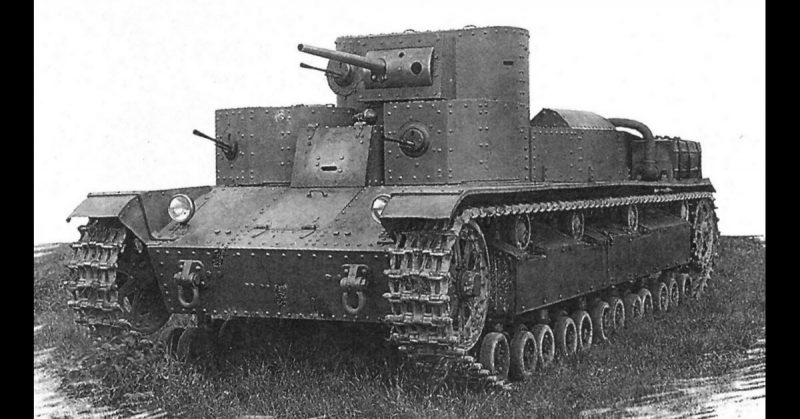The T-28 was a Soviet multi-turreted tank designed and produced in the 1930s. The origin of the tank was related to the British Vickers A1E1 Independent design, which was an interwar period tank comprised of a hull and five turrets.
The Soviet model had three turrets. Its main armament included a 76.2 mm KT-28 cannon positioned in the center. There were two additional turrets with 7.62 mm DT machine guns and two more machine guns fitted on the central turret, one at the front and one at the back.
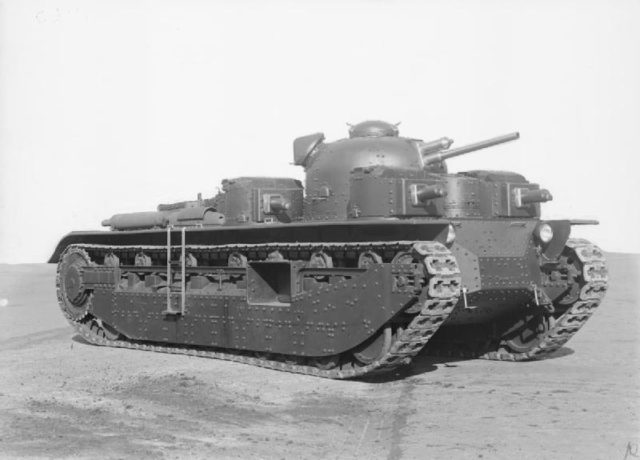
It went into mass production in 1933, when it was considered to be the cutting edge in medium tank design. At the time it was far superior to the Renault FT, which represented most of the French armored divisions. It was equal to or better than anything Great Britain had in its arsenal.
The Germans had no tanks at all, but that would rapidly change.
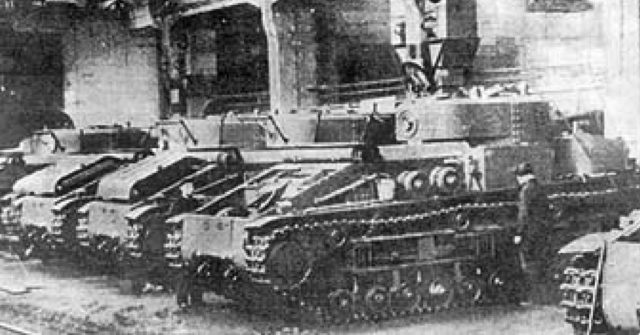
The story of the T-28 is a tale about how the history of warfare changed during the Second World War. The finest engineering minds were all put to one use ― to produce military technology that would be as deadly as possible. In such circumstances the T-28, a tank that was considered modern for its time, equipped with radio and anti-aircraft machine gun mounts, first entered combat during the Winter War with Finland in 1939.
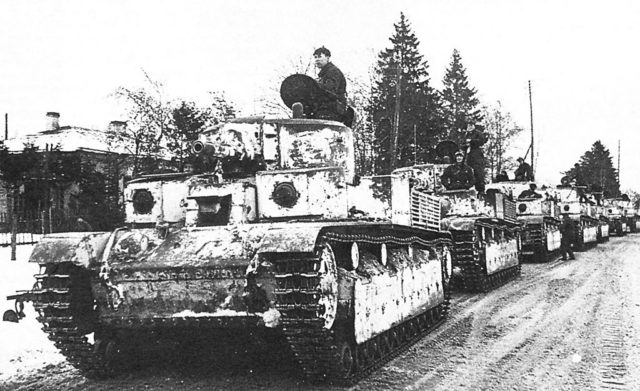
Despite its terrific firepower, the tank was poorly armored. Even though the Finnish had very few options regarding anti-tank weapons, they made good use of Molotov cocktails (invented during the Winter War) and disabled or destroyed some tanks.
The Soviets were concentrated on breaking the Mannerheim Line, the main Finnish defense line, using the T-28 as their principal instrument. After a major armor upgrade of the frontal armor from 30 mm to 80 mm and side and rear plates to 40 mm thickness, they were ready to crush the defense.
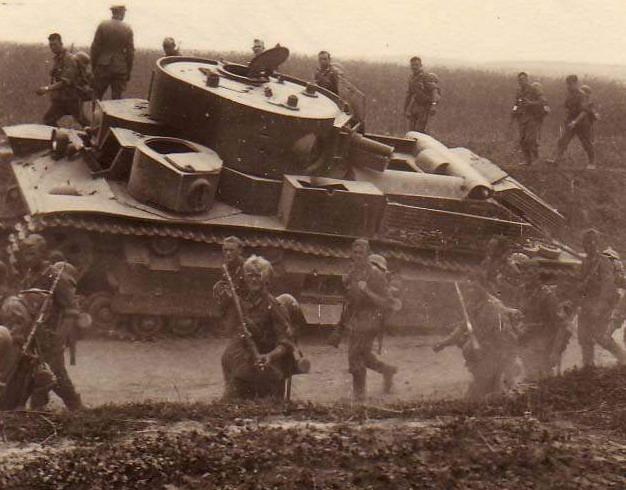
According to a Russian historian, Maksim Kolomiets, it was more usual for the Finnish to disable the T-28 than to destroy it. Out of 200 tanks that were knocked-out in Finnland, only 20 of them were unrepairable.
When Germany invaded the USSR in 1941, there were 411 T-28 tanks operational within the Red Army. The vast majority of those tanks were lost during the first two months of the invasion. The retreating Red Army abandoned most of them. The tank proved to be unreliable and prone to malfunction. Its engine and transmission were the most problematic parts. Some participated in the defense of Moscow and Leningrad, but by the end of 1941, the tank had become completely obsolete.
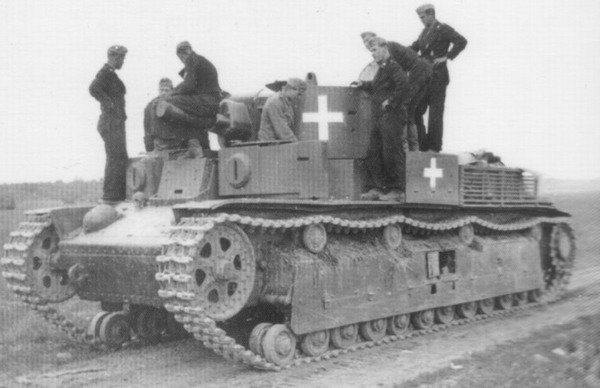
Although the Soviets abandoned the use of the T-28, any that were captured by the Axis forces were put into service ― Finnish troops used seven tanks, Romania two, and Hungary and Germany one which was designated Panzerkampfwagen T-28 746(r).
There are three surviving today, exhibited in museums. Two are located in Moscow, and one is in Finland.
